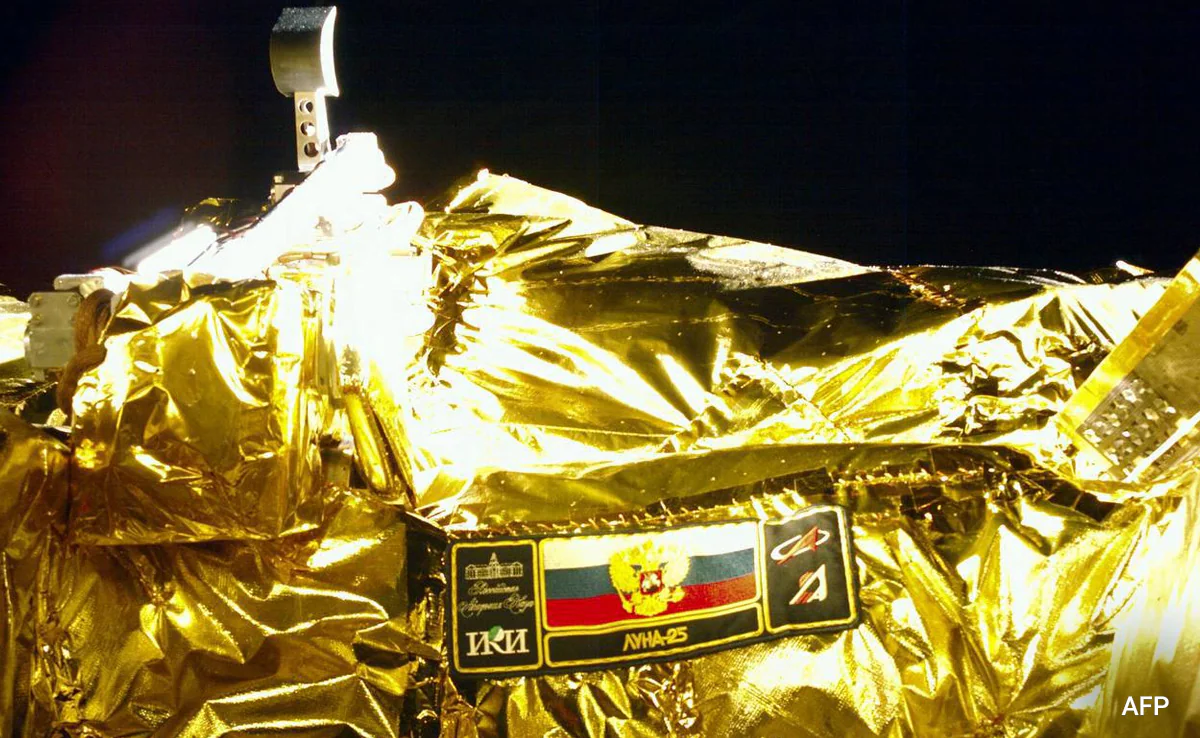Luna-25 collided with the moon’s surface due to an anomaly that occurred during a maneuver to reduce its orbit on August 19.

Space agency Roscosmos has reported that Russia’s Luna-25 mission was a failure after colliding with the moon.
Luna-25 collided with the moon’s surface due to an anomaly that occurred during a maneuver to reduce its orbit on August 19, according to a statement that the agency released to its Telegram social media channel early on August 20.
The spacecraft was tasked with making a soft lunar landing attempt on August 21 at the Boguslawsky crater, which is situated about 70 degrees south of the moon’s equator.
According to a statement from Roscosmos on August 19, Luna-25 received instructions to start its engines at 7:10 a.m. Eastern that day in order to place the spacecraft in a “pre-landing” orbit around the moon. Thoughtful as it was, the maneuver was strange.
According to a translation of the Roscosmos statement, “an emergency situation occurred on board the automatic station, which did not allow the maneuver to be performed with the specified parameters.”
The organization emphasized on Sunday that communication with the spacecraft was lost at around 7:57 a.m. Eastern. According to the Aug. 20 announcement, attempts to make contact with Luna-25 on Aug. 19 and 20 were unsuccessful.
According to a machine translation of the announcement, early examination showed that the spacecraft’s collision with the moon’s surface was caused by a difference between the impulse’s actual characteristics and those calculated.
The subject of explaining the circumstances behind the loss of the Moon will be handled by a specially created interdepartmental panel, according to the statement.
On August 10, a Soyuz-2.1b rocket launched the Luna-25 mission from the Vostochny Cosmodrome in Russia’s Far East.
The mission has experienced considerable delays due to technical issues and financial constraints. Despite the fact that it carried a variety of science packages, it was essentially a technology demonstration for lunar landings later in the decade.
This device has no European navigation camera when Russia invaded Ukraine in February 2022, rendering testing unfeasible. The country’s previous lunar landing was Luna-24, a sample return mission during the Soviet era that took place in 1976.
The loss of Luna-25 had an adverse effect on both Russian aspirations and larger efforts at collaboration. Additionally, the mission was officially a component of the International Lunar Research Station (ILRS) run by China. Wu Yanhua, a top figure involved with China’s deep space exploration initiatives, was present for the Luna-25 launch.
In the 2030s, significant components of the station’s infrastructure will be launched using Russian super heavy-lift launch vehicles, according to an ILRS plan presented in St. Petersburg, Russia, in June 2021. Following its takeover of Ukraine, some have expressed skepticism about Russia’s ability to make a meaningful contribution to the project.
In order to land close to the south pole area of the moon, Chandrayaan-3, an Indian spacecraft, and Luna-25 were said to be competing. On August 19, Chandrayaan-3 successfully decreased its lunar orbit, preparing it for a landing attempt at a location comparable to Luna 25’s latitude.
The landing of Chandrayaan-3 is scheduled on August 23 at 8:34 a.m. Eastern. The Smart Lander for Investigating the Moon (SLIM), a mission by the Japanese space agency JAXA, is set to launch on an H-2A rocket on August 25. The SLIM landing technology demonstrator aims to increase the efficiency and precision of exploration.